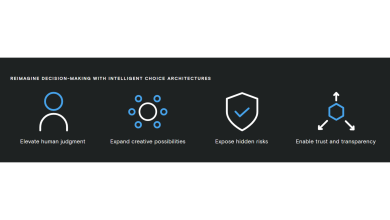Large enterprise systems are like vast ecosystems: interconnected, layered, and constantly evolving. Every update, integration, or configuration change can have a knock-on effect on performance, security, or the user experience. Maintaining software quality in the face of this complexity is not only difficult, it is also a strategic requirement. A single defect in the production process can result in downtime, compliance risks, or revenue loss.
This is where test automation comes in. Manual testing simply cannot keep up with the speed and volume of enterprise operations. With careful planning, automated frameworks can enable organizations to test thousands of test cases simultaneously, identify regressions immediately and maintain system stability in a variety of environments. These frameworks form the basis of reliable CI/CD pipelines, where all commits can be tested and verified with confidence before deployment.
However, introducing automation to these environments is not simply a matter of applying a tool to a problem. It requires organization, planning and expansion. As integration with current DevOps processes, distributed data systems and microservices is required, enterprises need intelligent, flexible automation.
This article will explain how to create a robust test automation plan that is enterprise-system-friendly, offering speed and safety while minimizing testing load and enhancing software reliability at scale. If you find yourself spending your nights trying to maintain consistency across various products and releases, you will learn how to regain control.
Key Challenges in Automating Enterprise-Level Testing
Managing Diverse Architectures and Legacy Systems
Enterprise systems tend to be more of a living museum of technology – side-by-side running of mainframes and cloud-native microservices. Such a combination is a source of tension in the implementation of automation. Older applications may not have APIs or compatibility with new testing tools, whereas new architectures require continuous verification with CI/CD pipelines. The solution to bridging these two worlds is the need to have flexible automation frameworks that can support both UI-based and API-based testing.
You also need a unified testing strategy that accommodates different programming languages, middleware, and deployment models. Without it, QA teams risk fragmented coverage and duplicated effort. Effective automation platforms, backed by experienced software QA services, enable enterprises to create modular test suites that adapt to changing infrastructure without requiring constant rework.
Ensuring Test Coverage Across Distributed Environments
Enterprise product testing is not simply about testing isolated features. It is about making sure that dozens of systems that are interconnected, such as ERP, CRM, data warehouses, APIs, and cloud services, keep collaborating with each other with each update. Every point of integration turns out to be a possible area of failure when not tested.
To attain meaningful test coverage in this case, it is important to focus on what is really important: business-critical workflows, high-traffic APIs, and user-facing components. Repetitive checks can be covered by automated smoke and regression suites, and edge cases that are not easily predictable by automation are covered by exploratory testing.
In the case of distributed environments, it is also important to ensure that the test data is consistent across the various databases and environments. Mismatched configurations that frequently result in false negatives (or, in a worst-case scenario, undetected flaws in a production process) can be avoided by automated synchronization scripts and environment monitoring tools.
Best Practices for Building Effective Test Automation
Designing a Scalable Automation Framework
An effective automation system does not happen in a single night – it is designed to be developed. Modular design is important in the enterprise setting. This is due to the fact that when tests are componentized and reusable, teams can add coverage easily without having to rewrite scripts every time. This design facilitates a continuous integration process where every module can be tested and re-integrated into the overall process.
It is also important to choose the tools that are compatible with your current enterprise infrastructure. Regardless of whether your systems are based on Java, .NET, Python, or even cloud-based microservices, the framework must fit well with your existing stack. Compatibility reduces interference, allowing your automation to be predictable across different pipelines and environments.
You also wish to have long-term maintainability. The use of clear naming conventions, test script versioning, and shared repositories will keep everything in order as teams expand. The more foreseeable your structure is, the sooner new engineers can make their input without compromising the system.
Integrating Automation into the Development Lifecycle
The process should be automated, not an afterthought. By integrating automated tests within the CI/CD pipelines, one can detect defects at an early stage, build faster, and release more stable versions. Every code commit will cause automatic tests that will verify functionality, security, and performance prior to deployment, which will significantly lower the rollback rates. Companies that hire remote full-stack developers can especially benefit from this approach, as automated testing ensures consistency across distributed teams.
This integration is smoother through cross-functional collaboration. When the QA, development, and operations teams are visible to each other regarding test outcomes, debugging becomes a collaborative process as opposed to a handoff. This team spirit not only increases speed but also creates trust. All people strive to achieve one thing – a stable, predictable release process that can easily be scaled to business needs.
Conclusion
Test automation in complex enterprise systems is not only a technical problem, but also a strategy and foresight. Automation is more than a tool when it is carefully considered and implemented on all levels of development – it is a stabilizing force.
The effective framework, with the assistance of teamwork and feedback, allows large organizations to keep up with the ever-changing environment without losing quality. It guarantees that all releases regardless of the complexity of the system, are predictable, reliable, and efficient.
In the end, successful automation delivers more than faster testing cycles. It reduces release risks, strengthens product resilience, and allows teams to focus on innovation rather than firefighting. For enterprises managing vast digital ecosystems, that balance of speed and confidence isn’t just valuable – it’s essential.



